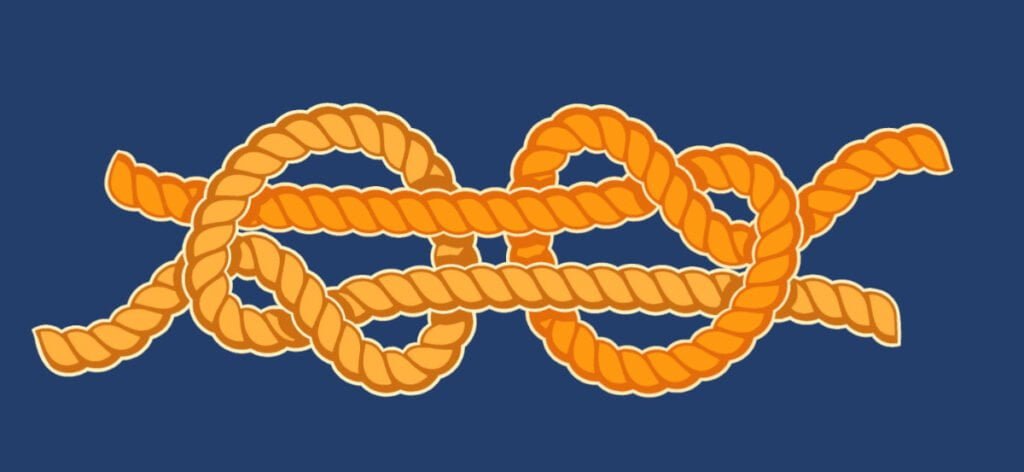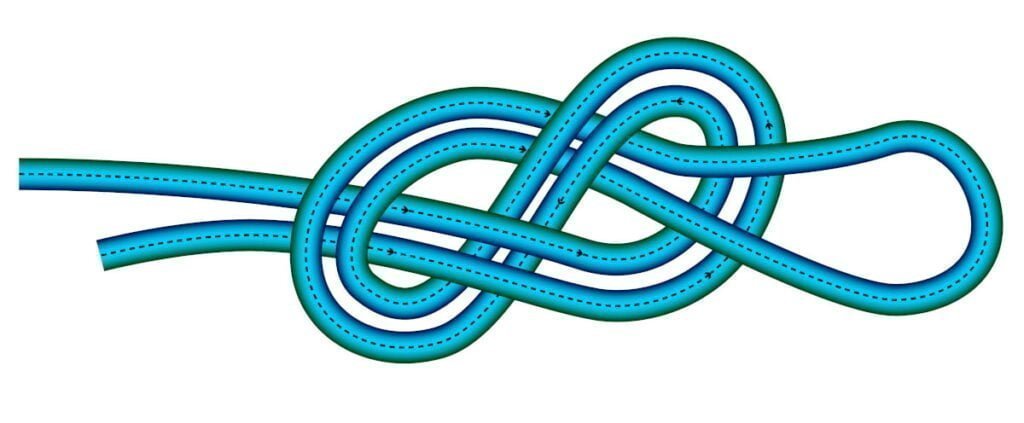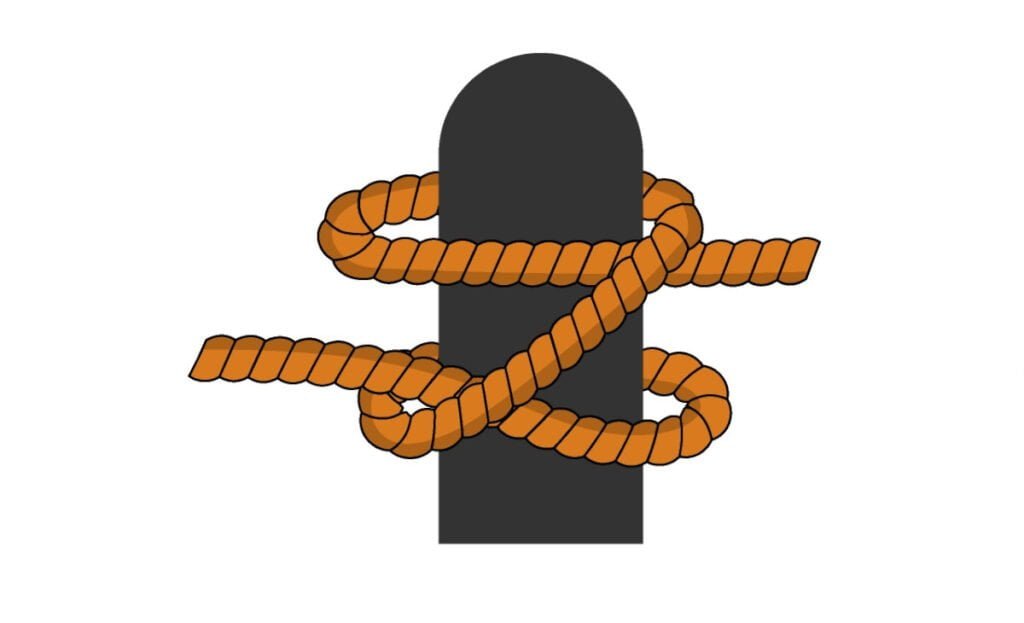Tying sailor knots correctly is a very important skill, although not everyone masters it easily. Do you know how to tie the most important knots? Make a A strong knot that ties quickly, is resistant and can be easily undone is basic knowledge. of any self-respecting sailor. Check your knowledge in this post.
Union knots
These are the most common type of knots and, almost certainly, they will be the ones you have to tie most frequently: they are used to tie two ropes of the same or different diameter. Discover the most important ones.
square knot
It is also known as terry or plain knot and it is one of the marine knots that has the most applications in daily life. It is used to tie two ropes of similar diameter or join the two ends of the same cable.

Simple eight knot
Much safer than the previous one, since it tightens more the greater the pressure; For this reason, it is commonly used in climbing, for example.
To make a figure-eight knot, form a loop with the rope, folding it over itself, passing it under and then over the loop you have formed.

Sheet turn knot
Is used for join ropes of different thickness. To do this, fold the thicker end over itself, forming a loop, and insert the thinner end through it. Next, surround the thick end with the thin end and insert the end of the latter between them, so that the thin end embraces the thick end and prevents the loop from coming undone.
Fisherman's knot
It's about a classic knot in navigation, as simple to do as making a simple knot at the end of each of the ropes to be joined, passing the other rope through the central part of it, so that both are joined.

weaver knot
It is a variety of terry knot, in which, once the knot has been created, the thick rope is taken out of the lower bosom and passed through its own bosom, thus obtaining a knot that becomes tighter the greater the pressure to which it is subjected.
Anchor knots
In this case, we have a single rope, which we must tie to a fixed structure, whether it be a tree, a rock or any other object.
Double eight knot
Contribute greater strength to the knot of eight: with the end folded over itself, make one more fold, pass the folded end inside the new created sinus and squeeze firmly.

Bow tie knot
It is used very frequently in navigation, since it is very easy to do, which is an advantage in adverse weather conditions, but it is also easy to undo under pressure and, furthermore, it does not have lateral sliding.
Making a crossbow is as easy as making a loop with the rope and turning it on itself; Repeat the operation and overlap both loops: pass the fixed element inside the circle you will obtain. Once finished, simply pull on the ends to tighten the knot.

bowline knot
The guide ace is the sailor knot par excellence, since it supports a lot of pressure, but is very easy to untie later. It is used in both sailing and climbing and is extremely practical in everyday life in any case where a secure knot is needed.
It is a little more complicated than the others, but it is worth mastering it for the number of practical applications it has. For this reason, in the nautical world there is a little mnemonic story to learn its steps:
- We form a loop and a tree (a simple loop).
- A snake comes out of the lake.
- Go around the tree from behind.
- He goes back into the lake.
Following this metaphor, once the knot is formed, it is tightened by pulling on the tree while holding the head and tail of the snake, as well as the root of the tree.

Related terms you should know
Once you get started in the world of sailor knots, you will discover that they have a certain vocabulary of their own that you should know. Below, we show you the definitions of the most used terms:
- Cape: This is what the rope is called.
- Ties up: used for ropes whose diameter is greater than 10 mm. whose use is to hold the boat.
- Boza: short rope that is attached to another, to a mooring line or to a chain to maintain tension at one end and be able to work on the other.
- Chicote: each of the ends of a rope.
- Breast: This is the name given to the space between two ropes when the rope is not taut.
- Ore: thickness of the rope, expressed in the length of its circumference.
- Loop: loop left when tying a rope.
- Say: fix a rope, either with a knot or with a bitten turn.
- Charge: pull a rope and pick it up.
- grind: loosen a rope little by little.
- Zafar: release two ends.
- Sugar: tighten a knot tightly.
- Temper: tension a rope.
- Lascar: Release the line slowly to maintain tension.
- adduce: pick up the rope in circles to prevent it from getting tangled.




